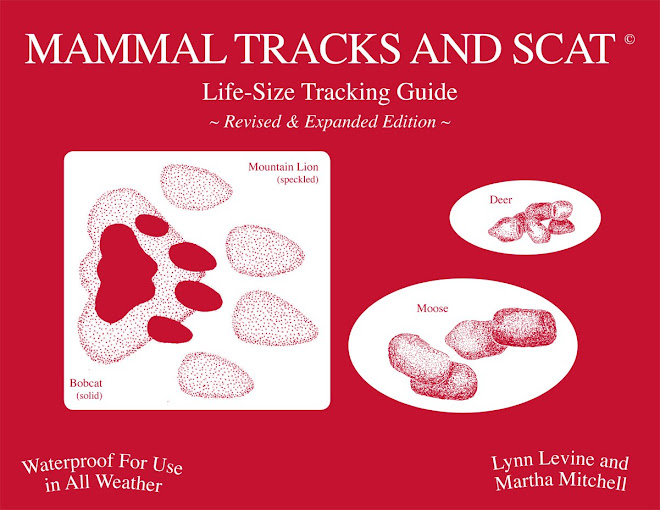1.27.12 I ventured out to the mailbox in light, cold rain and an inch of frozen slush underfoot to be startled in my musings by the chatter of a Belted Kingfisher as it made a mad dash first into a nearby white pine, then back and forth through swamp shrubs near the bottom of my driveway, scolding and chattering all the while. Although it rained much of the night and morning, there isn't a lot of open water around here.
Yesterday, a short loop through the area revealed the meanderings of river otter (its slide and tracks preserved in ice); oppossum; red fox; gray fox; coyote; deer. Yet unidentified, there were clear tracks of a weasel-family member as it dropped into open holes in the brook and exited onto snow leaving muddy tracks and drips of muddy water. All tracks were greatly magnified by the thawing temperatures - great viewing without the need for glasses!
Welcome
To all those interested in the natural world. Please add your sightings.
In the woods we return to reason and faith-Emerson
Best-Lynn
In the woods we return to reason and faith-Emerson
Best-Lynn
Friday, January 27, 2012
Thursday, January 12, 2012


1.11.12 Protected from some of the snow by dense hemlock branches overhead, and near an ample food supply of acorns, this chipmunk burrow seems to be outfitted for winter. The white ring of hoar frost inside the tunnel indicates the resident is inside, creating some warmth in contrast to outside temperatures.
Monday, January 9, 2012


1.09.12 Birch conk, Chaga, and Clinker Polypore are some of the common names for Inonotus obliquus. Found most commonly on Yellow Birch, often at the site of a wound, the irregularly-shaped fungus looks like a piece of burned wood. This slow-growing fungus is found on yellow birches in northern European and Asian countries, as well as in northern US and Canada. It has been the subject of medical research for its apparent anti-cancer properties.
Friday, January 6, 2012


1.06.12 The Cecropia moth cocoon, measuring about 2.75 inches, resembles a milkweed pod attached to a branch in the woods. Lashed to a Striped maple twig along its top side and encompassing the intersection of two small side twigs into its construction, it is secure against many challenges. If successful, it will complete its metamorphosis in spring.
Thursday, January 5, 2012

1.04.12 Temperatures were in the teens when I bundled up and headed for the mountain behind my house. I was nearing the top when, from some distance, I could see a white patch standing out in the snowless terrain. Curious, I approached to find hoarfrost around the opening of a pair of 4 -5 inch holes in the ground at the base of a fallen tree. Some animal is probably dozing down there, and its warm, moist breath freezes on contact with the cold air, creating a halo-like effect.
Monday, January 2, 2012


1.02.12 On 10.23.11 I posted a picture of a Baldfaced Hornet's nest dangling from a high branch. In the last two weeks, I've seen Bluejays perched atop the swaying globe, pounding and pulling at the outer paper covering. A few mornings ago, the nest was no longer hanging. I found the paper covering tangled in goldenrod stems; the remaining comb, with the nest's opening still attached, was on the ground. Each comb is made up of uniform-sized cells, measuring 1 cm in diameter. There were two layers of comb, separated by cone-shaped "risers" about an inch tall, constructed of the paper used for the outside. A few remaining covered cells contain nearly-developed hornets, now frozen. The queen of these nests mates just in late fall and burrows into the ground where it will spend the winter, emerging in spring to make a golf-ball sized nest, lay eggs and raise the few youngsters that will become workers to assist in enlarging the nest and raising subsequent members of the colony.
Subscribe to:
Posts (Atom)



